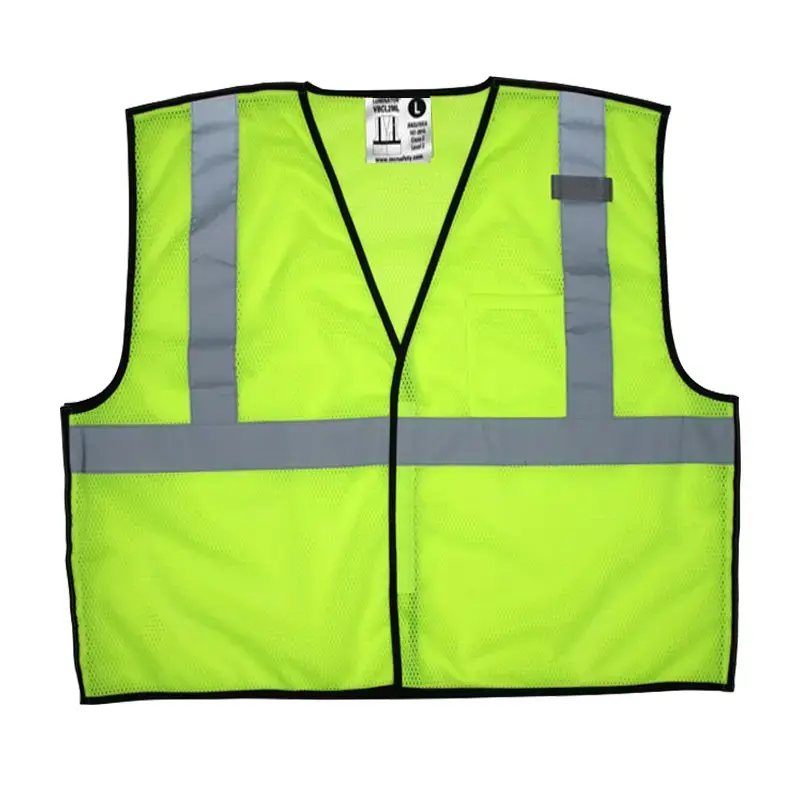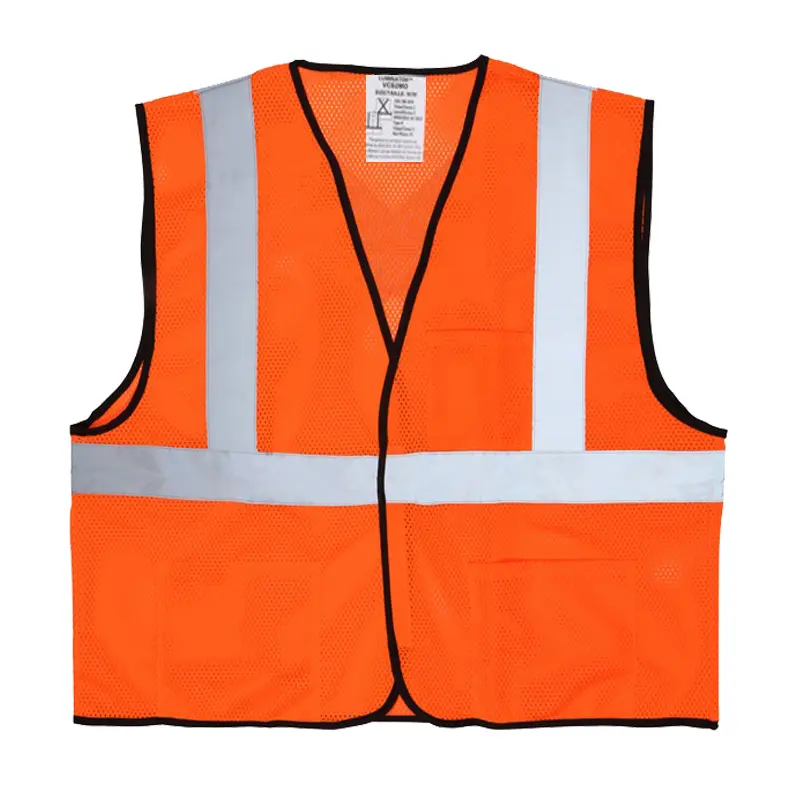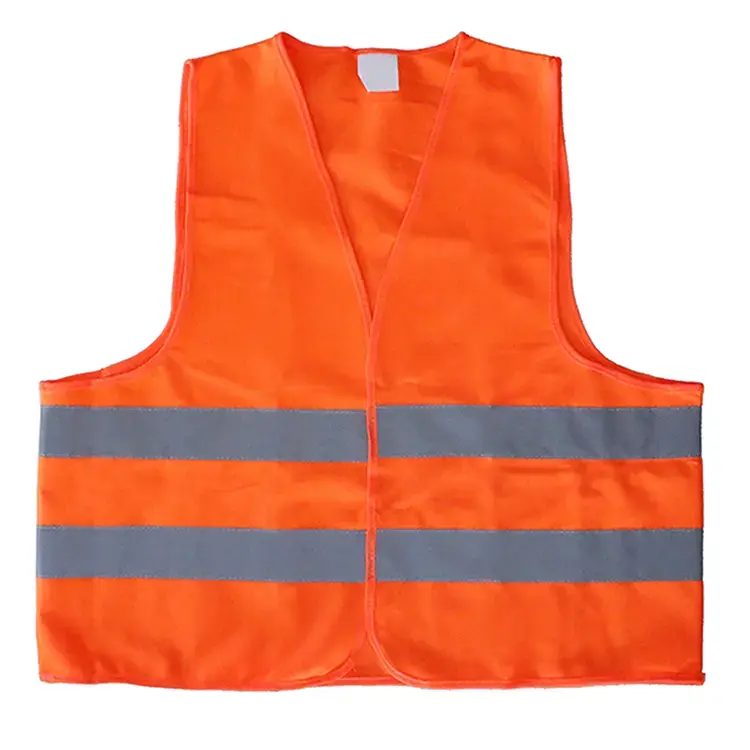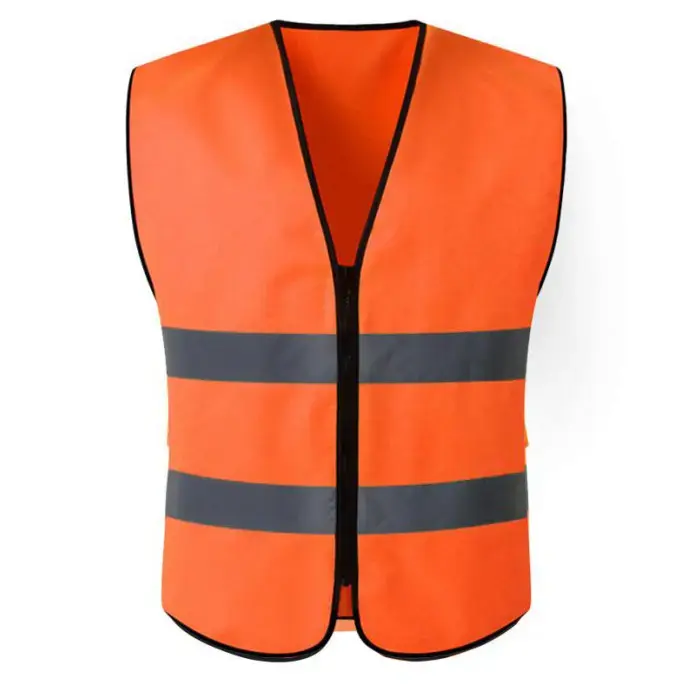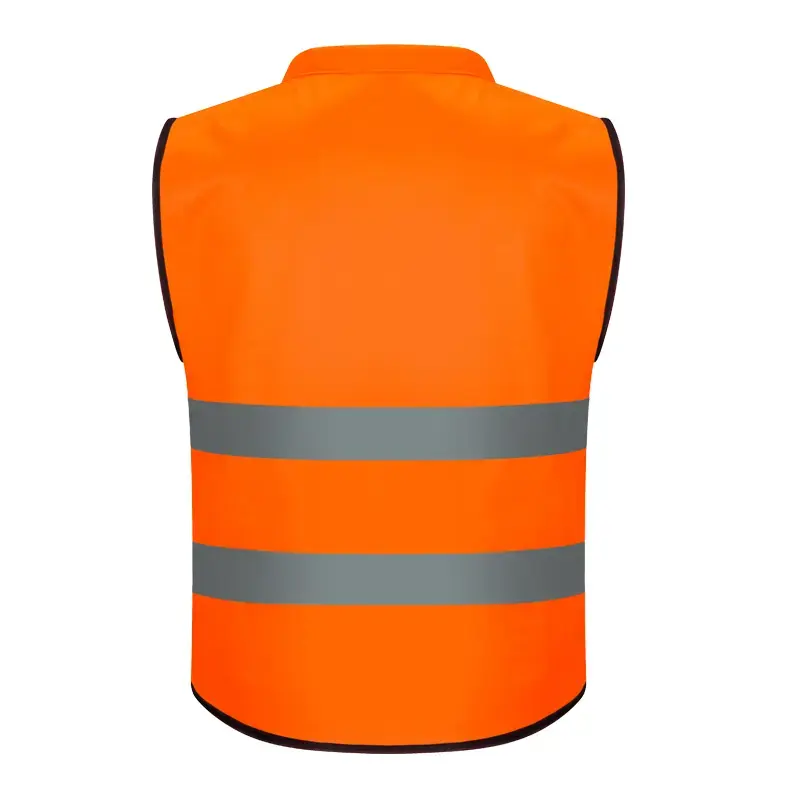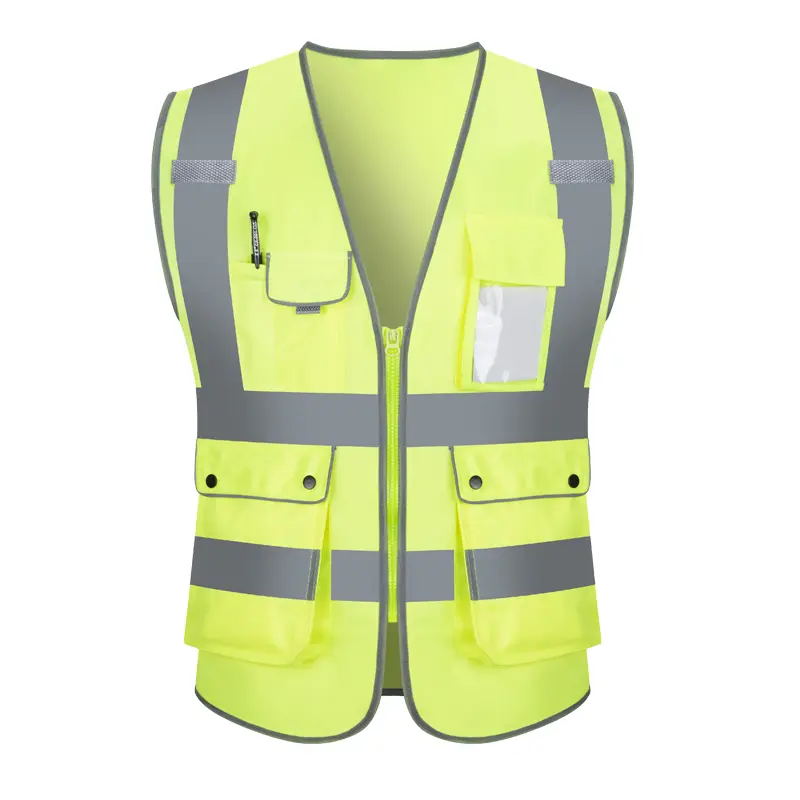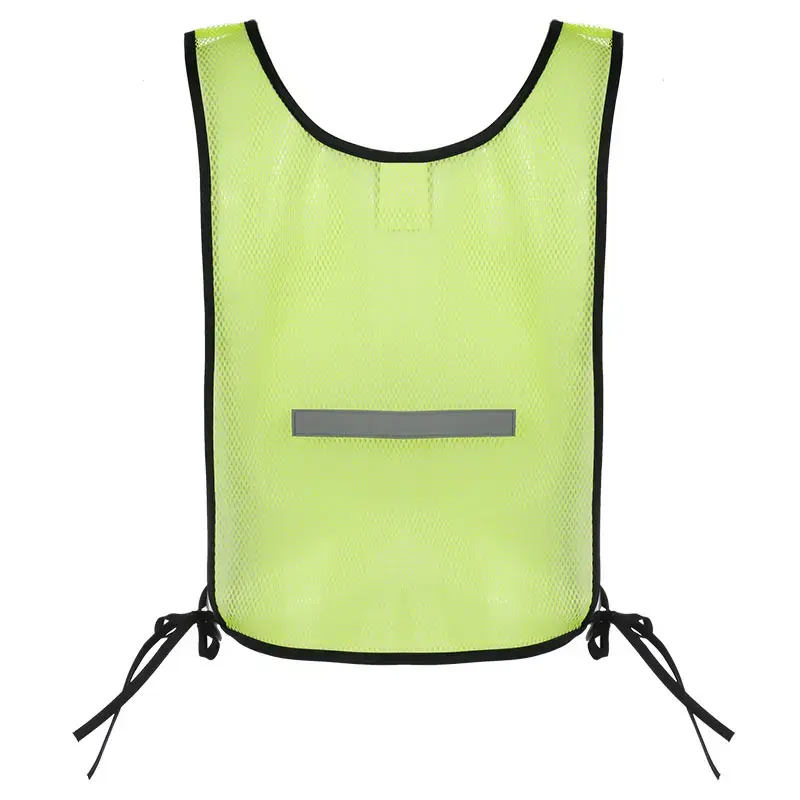How to evaluate the production capacity of reflective vest suppliers
How to evaluate the production capacity of Reflective Vest suppliers
In today's global business environment, it is crucial for international wholesale buyers to find reliable reflective vest suppliers. These reflective vests are widely used in many fields such as construction, transportation, fire protection, security, etc., and their quality and supply stability are directly related to the success or failure of the buyer's business. And evaluating the production capacity of suppliers is the key to ensuring that they can meet market demand and deliver high-quality products on time.
1. Clarify your own needs
Product specifications and models: Determine the style of reflective vests required, such as ordinary reflective vests, hooded reflective vests, reflective vests, etc.; size range; and requirements for reflective materials, such as reflective lattices, high-brightness reflective cloth and other types.
Quantity and delivery cycle: Based on business forecasts and market trends, estimate the monthly or quarterly purchase quantity, and clarify the expected delivery time and the latest acceptable delivery deadline.
Quality standards: Understand the quality certification requirements of the target market, such as the EU market must comply with the EN 17353:2020 directive, and the US market has ANSI/ISEA 107 standards, etc. At the same time, clarify your own quality expectations, including reflective performance, durability, comfort and other aspects.
2. Core elements of production capacity
Production equipment and facilities
Advancedness: Modern production equipment can improve production efficiency and product quality. For example, fully automatic cutting machines can accurately cut fabrics, reduce waste and defective rates; high-precision printing equipment can make the patterns on reflective vests clearer and firmer.
Integrity: Suppliers should have a complete production line from fabric processing to finished product production, including weaving, printing and dyeing, cutting, sewing, printing and labeling, etc., so as to effectively control production progress and product quality, reduce dependence on external suppliers, and reduce supply chain risks.
Maintenance: Regular maintenance and maintenance of equipment is a prerequisite for ensuring its normal operation and production efficiency. Ask the supplier's equipment maintenance plan and records to understand the average time between failures and repair time of the equipment to evaluate the reliability of the equipment and production continuity.
Employee skills and qualities
Professional skills: Skilled technical workers are the key to ensuring product quality and production efficiency. For example, sewing workers need to have superb sewing skills and be able to operate various sewing equipment skillfully to produce reflective vests that meet quality standards; printing and dyeing workers need to master the correct printing and dyeing process to ensure bright and firm colors.
Training and development: Suppliers should attach importance to employee training and development, provide regular skills training and safety training, so that employees can continuously improve their operating level and ability to cope with new technologies and new equipment.
Teamwork: Good teamwork spirit can improve production efficiency and product quality. Understand the team building of suppliers, such as whether teamwork activities are carried out and whether effective communication mechanisms are established, so as to evaluate the collaboration ability and working atmosphere between employees.
Raw material supply management
Supplier stability: Evaluate the number of raw material suppliers, cooperation time and supply stability of suppliers. Multiple stable raw material suppliers can reduce the risk of production interruptions due to raw material shortages.
Quality control: Suppliers should establish a strict raw material quality inspection system to ensure that the raw materials used meet quality standards. Require suppliers to provide quality inspection reports and qualification certificates for raw materials, such as strength test reports for fabrics, reflective performance test reports for reflective materials, etc.
Inventory management: Reasonable raw material inventory management can ensure the continuity of production. Understand the supplier's raw material inventory level and inventory management strategy, such as adopting just-in-time production (JIT) mode or safety inventory strategy, to evaluate its ability to cope with market demand fluctuations.
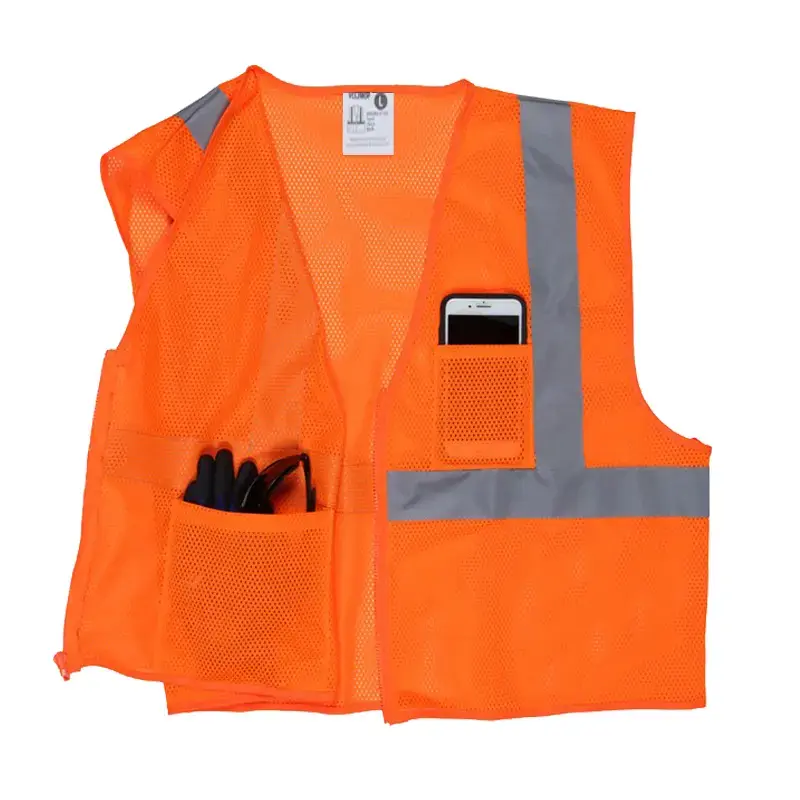
3. Field investigation and evaluation
Production site and environment
Factory layout: Reasonable factory layout can improve production efficiency and logistics efficiency. Observe whether the functional divisions of the factory are clear, such as whether the production area, storage area, office area, etc. are set separately; whether the work process is smooth, whether the transportation routes of raw materials, work-in-progress and finished products are reasonable, and whether there are crossovers and detours.
Environmental sanitation: A clean and hygienic production environment is conducive to improving product quality and employee work efficiency. Check the cleanliness of the factory, including whether the floor, equipment, workbench, etc. are clean and tidy; whether there are problems such as poor ventilation and insufficient lighting, which may affect the health and work quality of employees.
Production process and technology
Process rationality: Understand the supplier's production process in detail, from the storage of raw materials to the delivery of finished products. Evaluate whether the connection between each process is tight, whether there is unnecessary waiting time and intermediate links, to determine the efficiency and smoothness of the production process.
Technology level: Observe the key process links in the production process, such as the pasting process of reflective materials and the sewing process of fabrics. Understand the process technology and quality control measures adopted by the supplier, such as whether professional pasting equipment and process parameter control are used to ensure the paste firmness and reflective effect of reflective materials; whether there is a quality inspection link in the sewing process, and check the stitch density, stitch flatness, etc.
4. Production planning and scheduling capabilities
Plan formulation and execution
Plan rationality: Evaluate whether the supplier's production plan formulation is scientific and reasonable. The production plan should be comprehensively considered based on factors such as order quantity, delivery date, equipment capacity and staffing to ensure the feasibility and executability of the production task.
Execution strictness: Check whether the supplier strictly follows the production plan for production and whether there are frequent plan changes and adjustments. If the plan changes frequently, it may lead to production confusion, progress delays and cost increases.
Order tracking and feedback
Real-time tracking system: Advanced production management systems can track production progress and order status in real time. Ask suppliers whether they have such a system to provide buyers with production progress reports in a timely manner, including information such as the number of completed items, the number of items in production, and the estimated completion time.
Problem feedback and solution mechanism: When abnormal situations or problems occur during the production process, suppliers should be able to provide timely feedback to buyers and take effective solutions. Understand the supplier's problem handling process and emergency response mechanism, such as whether a dedicated customer service team or problem solving team has been established to respond quickly to and solve sudden problems.
5. Quality control and inspection system
Quality management system
Certification status: Check whether the supplier has passed relevant quality management system certifications, such as ISO 9001:2015 quality management system certification. These certifications indicate that the supplier has a certain foundation and ability in quality management and can establish and implement a quality management system in accordance with international standards.
System operation effectiveness: In addition to the certification certificate, it is more important to understand the actual operation of the supplier's quality management system. Through communication with the supplier's quality management personnel, understand the specific application and implementation of the quality management system in the production process, such as whether clear quality policies and quality objectives have been formulated, whether the quality responsibilities of each department are clear, whether the quality management system documents are complete and effectively controlled, etc.
Production process quality control
Key process control: For the key processes in the production process of reflective vests, such as the lamination, cutting, and sewing of reflective materials, the supplier should establish strict quality control standards and operating specifications. Check whether the production equipment, process parameters, personnel operations, etc. of these processes meet the quality control requirements, monitor and inspect the key processes in real time, and ensure the product quality of each process.
Quality inspection link: The supplier should set up multiple quality inspection links in the production process and conduct strict inspections on raw materials, semi-finished products and finished products. Understand the methods, standards and frequency of inspections, such as whether sampling inspection or full inspection is adopted, whether the inspection items cover the key quality characteristics of the product, etc. At the same time, check whether the supplier's inspection equipment is complete and accurate, and whether the inspection records are complete and traceable.
6. Capacity flexibility and scalability
Flexible production capacity
Overtime and shift system: When facing peak orders or urgent orders, does the supplier have the ability to flexibly adjust production capacity, such as increasing production by arranging overtime or increasing the number of shifts. Understand the supplier's overtime policy and employees' willingness to work overtime, as well as the impact of overtime on product quality and cost.
Outsourcing production capacity: Evaluate the supplier's outsourcing management capabilities and the production capacity and quality level of outsourcing partners. When its own production capacity is insufficient, can the supplier choose a suitable outsourcing manufacturer for production, and effectively supervise and manage the outsourcing production process to ensure that the quality and delivery time of the outsourced products meet the requirements.
Capacity expansion potential
Equipment expansion capacity: Understand whether the supplier has sufficient funds and space to purchase new production equipment to meet the needs of future business growth. Ask the supplier about its equipment procurement plan and capital budget, and evaluate the feasibility and time frame of its equipment expansion.
Possibility of plant expansion or leasing: If the supplier needs to expand its production scale, is there a suitable plant expansion plan or leasing plan? Consider the impact of factors such as plant availability, geographical location, and rental costs on capacity expansion, as well as the potential impact of expanding or leasing new plants on production processes and logistics efficiency.
7. Customer Evaluation and Case Study
Customer Satisfaction Survey
Survey Method and Scope: Suppliers should conduct customer satisfaction surveys regularly to understand customers' evaluation and feedback on their product quality, delivery timeliness, service level, etc. Ask suppliers about their customer satisfaction survey methods and frequency, and whether the survey covers their main customer groups to ensure that the information collected is representative and objective.
Result Analysis and Improvement Measures: Analyze the results of the customer satisfaction survey to understand the customer's satisfaction level and main complaints. Whether the supplier has formulated and implemented effective improvement measures for customer feedback, and how effective the improvement measures are, all of which can reflect the supplier's attention to customer needs and its ability to continuously improve.
Successful Cases and Cooperation Experience
Case Selection and Analysis: Require suppliers to provide some representative customer cases, especially cooperation cases with international wholesale buyers. In-depth understanding of the cooperation background, order quantity, delivery requirements, product quality, etc. of these cases, as well as the problems and solutions encountered during the cooperation process.
Customer recommendations and evaluations: Contact the supplier's existing customers to obtain their recommendation letters or evaluation opinions. Understanding the supplier's production capacity and performance directly from customers can more realistically and objectively evaluate the supplier's strength and reputation.
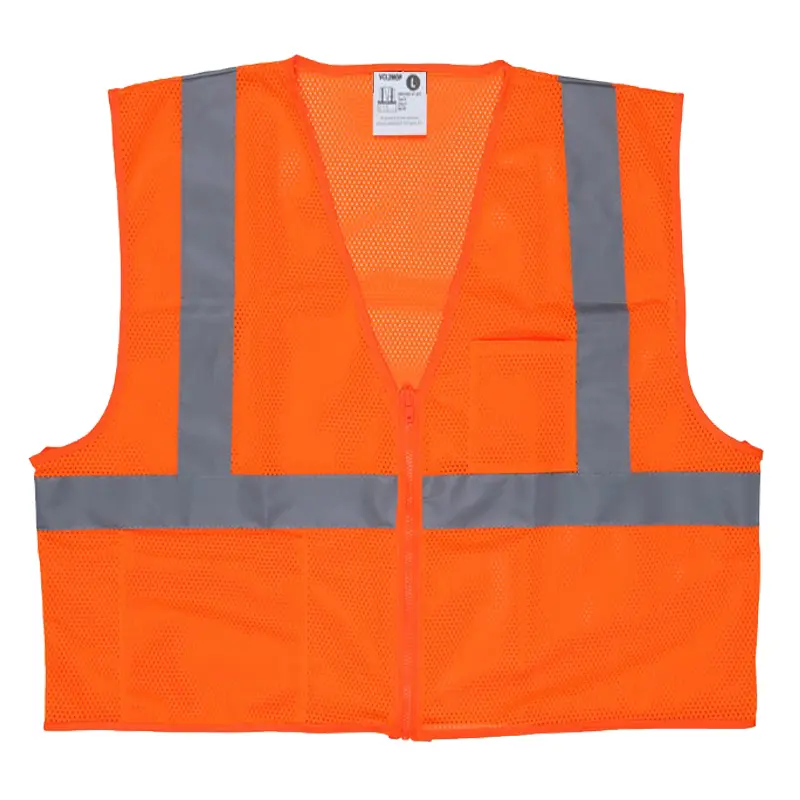
8. Sustainable Development and Social Responsibility
Environmentally friendly production practices
Environmental protection policies and measures: Suppliers should comply with local environmental laws and policies and take effective environmental protection measures to reduce environmental pollution during the production process. Understand the supplier's practices and investments in wastewater treatment, waste gas emissions, and waste recycling, such as whether sewage treatment equipment has been installed and environmentally friendly printing and dyeing auxiliaries have been used.
Environmental certification and honors: Obtaining relevant environmental certifications, such as ISO 14001 environmental management system certification, can prove the supplier's efforts and achievements in environmental protection. In addition, some suppliers may have received other environmental honors or awards, which also reflects their good image in sustainable development.
Fulfillment of social responsibilities
Employee welfare and rights protection: Pay attention to the supplier's employee welfare and rights protection, such as whether wages, working hours, labor protection, vocational training, etc. comply with local laws and regulations and international standards. A supplier with a good sense of social responsibility can attract and retain excellent employees, thereby ensuring the stability of production and product quality.
Community participation and contribution: Understand the supplier's community participation and contribution, such as whether it participates in local public welfare activities, supports education and cultural undertakings, etc. Suppliers who actively participate in community construction usually have a good corporate reputation and social image, which may also have a positive impact on their production operations and customer relationships.
9. Communication and cooperation capabilities
Communication channels and response speed
Multiple communication methods: Suppliers should provide multiple communication channels, such as telephone, email, instant messaging tools, etc., so that buyers can contact them in a timely manner. Understand whether the supplier's communication channels are unobstructed and whether there are communication barriers or delays.
Dedicated person in charge and quick response: Is there a dedicated person responsible for communication and coordination with buyers, and can respond to buyers' inquiries and feedback in a timely manner. Evaluate the supplier's response speed, whether the supplier can give a clear reply or solution to the questions or needs raised by the buyer within the specified time, which reflects the supplier's attention to customers and service awareness.
Cooperation attitude and flexibility
Positive willingness to cooperate: During the cooperation process, suppliers should show a positive willingness to cooperate and be willing to work with buyers to solve problems, improve product quality and optimize production processes. Observe the attitude and behavior of suppliers when facing problems and challenges, and whether they actively cooperate with buyers to conduct investigations and improvements.
Flexibility and adaptability: The market environment and customer needs are constantly changing. Suppliers need to have a certain degree of flexibility and adaptability, and be able to adjust production plans, product specifications or delivery methods in a timely manner according to the requirements of buyers. Evaluate the supplier's adaptability and flexibility in the face of changes, which can reduce cooperation risks and increase the success rate of cooperation.
10. Evaluation tools and indicators
Production capacity evaluation checklist
Equipment list and status evaluation: List the supplier's main production equipment, including equipment name, model, quantity, purchase time and other information, and evaluate its equipment status, such as the newness, operating status, maintenance records, etc. of the equipment.
Employee skill evaluation form: Design an employee skill evaluation form to test and evaluate the skills of the supplier's employees, including professional knowledge, operating skills, problem-solving ability and other aspects. The evaluation can be carried out through on-site operation demonstration, written test, interview, etc., and the evaluation results are recorded.
Key Performance Indicators (KPIs)
Production efficiency KPI: such as production quantity per hour, daily production output, etc., by comparing the actual production efficiency of the supplier with the industry average or target efficiency, evaluate its production capacity.
Quality KPI: including batch qualification rate, defective rate, rework rate, etc. These indicators reflect the product quality problems of the supplier and directly affect production efficiency and delivery capacity.
Delivery KPI: such as delivery on-time rate, order delay rate, etc., are used to measure whether the supplier can deliver products on time and meet the customer's delivery requirements.
Conclusion
Evaluating the production capacity of reflective vest suppliers is a comprehensive and systematic process, which requires buyers to conduct detailed inspections and analyses from multiple aspects. Through a comprehensive evaluation of factors such as the supplier's production equipment, employee skills, raw material management, production process, quality control, production capacity flexibility, customer evaluation, sustainable development, and communication and cooperation capabilities, we can accurately understand the supplier's production strength and potential, so as to select the partner that best meets our needs, ensure the stable supply and quality assurance of reflective vests, and lay a solid foundation for the success of international wholesale procurement business.
In the actual evaluation process, buyers should formulate detailed evaluation plans and standards based on their specific needs and order characteristics, and conduct a comprehensive and in-depth evaluation of suppliers in combination with field visits, data analysis, customer feedback and other methods. At the same time, maintain good communication and cooperation with suppliers, jointly solve problems found in the evaluation process, promote continuous improvement and development of suppliers, and achieve mutual benefit and win-win results for both parties.

